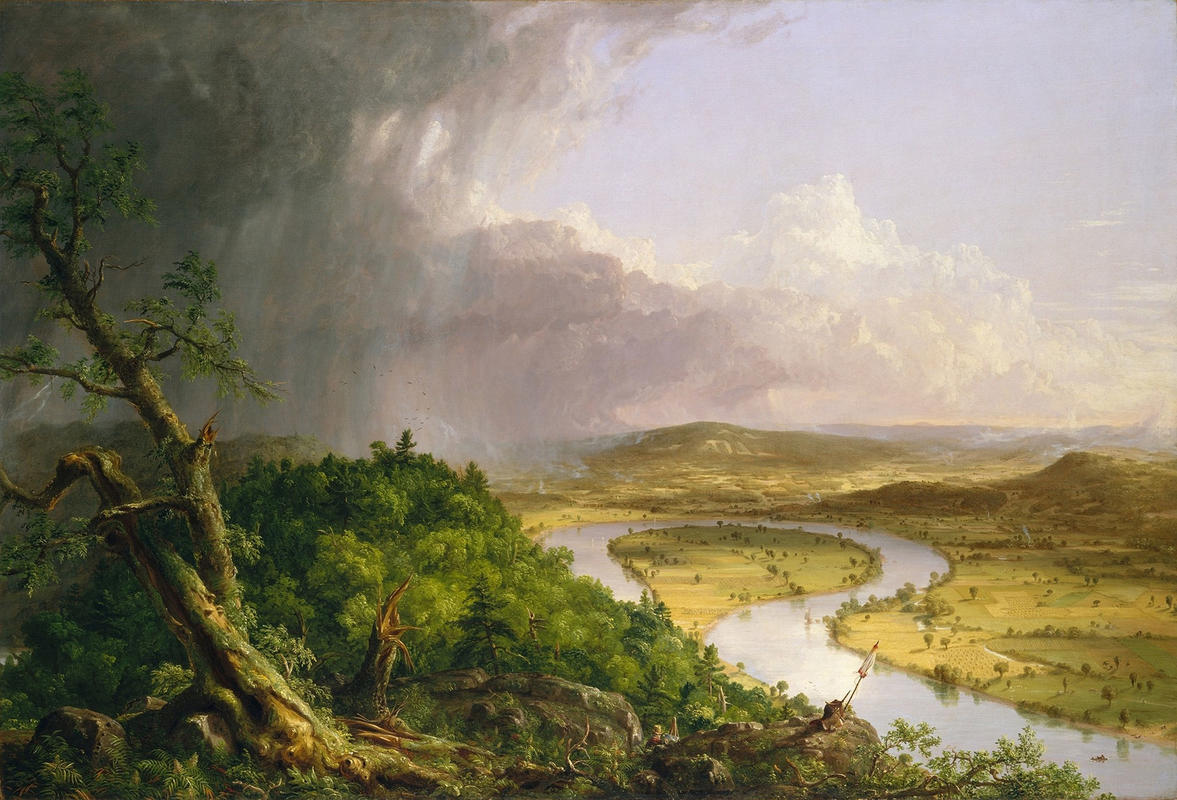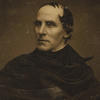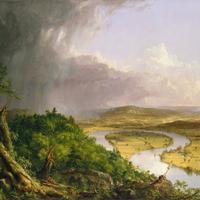More about The Oxbow

Contributor
The Oxbow by Thomas Cole is widely known as America’s most famous landscape painting.
I mean, look at it. You can see why. Not only is it a staggering 52 x 72 inches big, but those green pastures, quiet streams, and fluffy clouds just make you want to grab a blanket, a box of Double Stuf Oreos, and some La Croix so you can go lay in this beauty and take in the sweet grassy air. Cole wanted you to feel like you could step into this painting as easily as it might be to open your door and go outside. I think it’s safe to say he achieved that goal.
But of course, a painting this popular isn’t just famous for its looks. It’s famous for what those looks represent. The Oxbow, or how it was originally named, View from Mount Holyoke, Northampton, Massachusetts, after a Thunderstorm, has been viewed as an endorsement of Westward expansion. The painting presents to the viewer two separate Americas. On the left is the untapped resources and lush environment. On the right is farmland where humans, notably colonizers, have settled. But in the middle is a man, kind of just chilling. The man in the painting, presumably Cole himself, isn’t being consumed by the surrounding nature, and he himself isn’t ravaging the land. It’s tranquil, which seems to suggest some type of unity between man and land that could be achieved by going West.
Right or wrong (but let’s be honest, wrong), Westward expansion continued until we reached the Pacific, and for the past almost two hundred years since this painting was completed, in 1836, we’ve pillaged the land and done irreparable damage to not just this region, but the entire world. People have been displaced for resources, and this view, which once represented a positive outlook on the future of a burgeoning country, is no longer even a shell of its former self.
Modern photographer Peter Croteau mimicked the composition of The Oxbow in his 2012 picture Construction Site. It’s a very similar shot from the same point of view, only things are drastically different. What was once a dense forest filled with wildlife has now been diminished to a bald tree in a construction zone, cordoned off by orange barricade tape. Whether Cole legitimately supported Westward expansion or not, I’m sure he never imagined the results would look like this.
Sources
- Sherwin, Skye. “Thomas Cole’s The Oxbow: a lush riot in the land of plenty” The Guardian. June 29, 2018. https://www.theguardian.com/artanddesign/2018/jun/29/thomas-coles-the-o…
- Lane, Mary M. “Reframed: Thomas Cole’s "The Oxbow"” Art & Object. May 13, 2021. https://www.artandobject.com/news/reframed-thomas-coles-oxbow
- Mallonee, Laura C. “A Photographer Visits the Contemporary Landscape of Thomas Cole’s “The Oxbow”” Hyperallergic. June 24, 2015. https://hyperallergic.com/214191/a-photographer-visits-the-contemporary…
Featured Content
Here is what Wikipedia says about The Oxbow
View from Mount Holyoke, Northampton, Massachusetts, after a Thunderstorm, commonly known as The Oxbow, is a seminal American landscape painting by Thomas Cole, founder of the Hudson River School. The 1836 painting depicts a Romantic panorama of the Connecticut River Valley just after a thunderstorm. It has been interpreted as a confrontation between wilderness and civilization.
Check out the full Wikipedia article about The Oxbow













